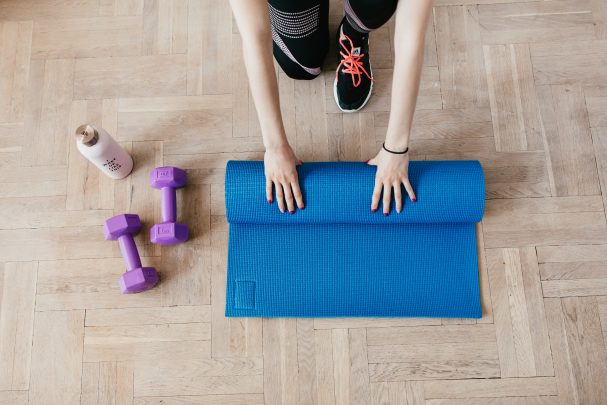If you experience painful menstrual cycles that negatively impact your day-to-day (whether it’s period cramps or a groggy mood) then cycle syncing may just become your new best friend!
Cycling syncing is all about achieving a balance that aligns your exercise, nutrition and overall lifestyle to the natural rhythm of your cycle, which can aid in reducing the negative symptoms you would commonly experience during your monthlies.
Let’s look at what cycle syncing is, and how to get into it:
Cycle syncing for better flow
The shift in your hormone levels and energy levels during your cycle can leave you feeling frazzled. Menstrual cycle syncing is about syncing your lifestyle and diet to the different phases of your menstrual cycle to accommodate for these changes happening in your body.
By aligning these unique rhythms, you can achieve a healthy menstrual cycle that doesn’t feel like a battle every month, and rather an empowering experience that aligns you with the natural flow of your body.
ALSO SEE: Is your tired, tired? We’re talking burnout.
The four phases of a woman’s cycle
The menstrual cycle typically lasts around 28 days (but can vary), consisting of four phases:

Menstrual phase
This is the time when menstruation occurs, lasting approximately 3-7 days. Hormone levels drop, and the uterine lining sheds.
Follicular phase
During this phase, hormones stimulate the development of ovarian follicles. It usually lasts from days 7 to 14.
Ovulatory phase
Occurring around day 14, this phase marks the release of a mature egg from the ovary, making it the most fertile time.
Luteal phase
This phase follows ovulation and lasts from days 15 to 28 (or until the start of the next menstrual period). Hormone levels shift to prepare for a potential pregnancy.
ALSO SEE: How to tap into your flow states
What to expect when you start cycle syncing
Cycle syncing can improve various functions, such as:
Enhanced productivity and focus
Acknowledging your hormonal fluctuations allows you to harness the natural flow of energy throughout your cycle. During the follicular phase leading up to ovulation, eostrogen levels rise, resulting in increased energy, enhanced creativity, and improved cognitive function.
Improved exercise performance
Syncing your workouts with your menstrual cycle can lead to better results and reduced risk of injury. During the follicular phase, eostrogen levels peak, promoting muscle building and strength gains. This is an ideal time to engage in high-intensity exercises.
ALSO SEE: Mind & body: the 5 best meditation and movement apps
Conversely, during the luteal phase, progesterone rises, leading to decreased energy levels. Adjusting your exercise routine to include more gentle activities during this phase can be beneficial. You might want to skip the high intensity workouts and engage in something with low impact like yoga, pilates or even a lovely walk.

Optimised nutrition
Cravings are a common occurrence during different phases of the menstrual cycle. By understanding these cravings, you can tailor your diet to provide your body with the nutrients it needs most at specific times.
For example: during the luteal phase, when progesterone increases so reaching for foods rich in magnesium and B vitamins can help combat mood swings and bloating.
Enhanced emotional well-being
Menstrual cycle syncing encourages women to embrace their emotions and be more in tune with their feelings. By being in sync with your hormones throughout the month, women can better understand and manage emotional changes, leading to increased emotional resilience and overall well-being.
Hormonal balance
Menstrual cycle syncing may also help regulate irregular cycles and reduce menstrual symptoms like cramps, bloating, and mood swings. By adopting healthier lifestyle choices in alignment with the cycle, women may experience improved hormonal balance and reduced hormonal disturbances.
Remember, this is a trial and error process. As with any wellness practice, menstrual cycle syncing is a highly individualised journey. It requires patience, self-awareness, and open-mindedness to experiment and find what works best for you.
ALSO SEE:
Feature Image: Pexels

